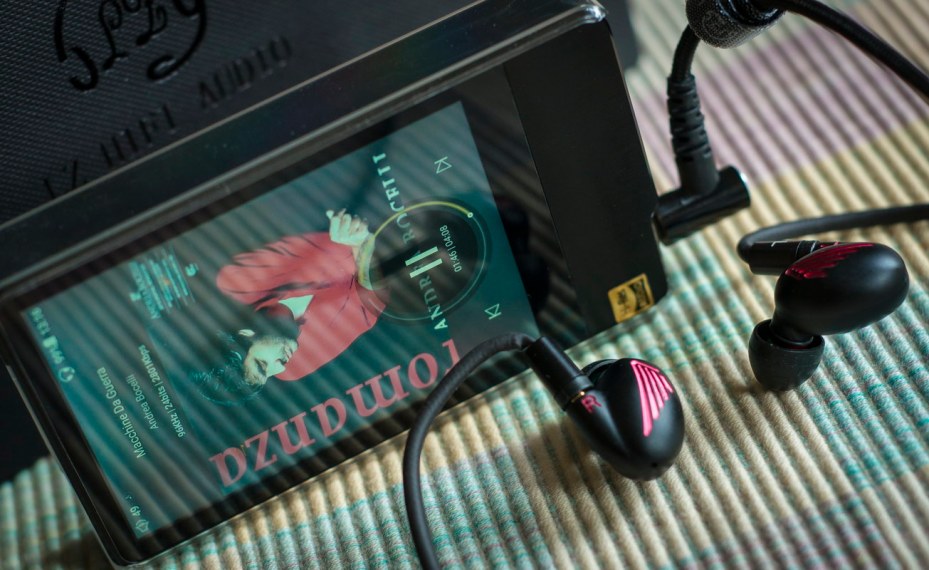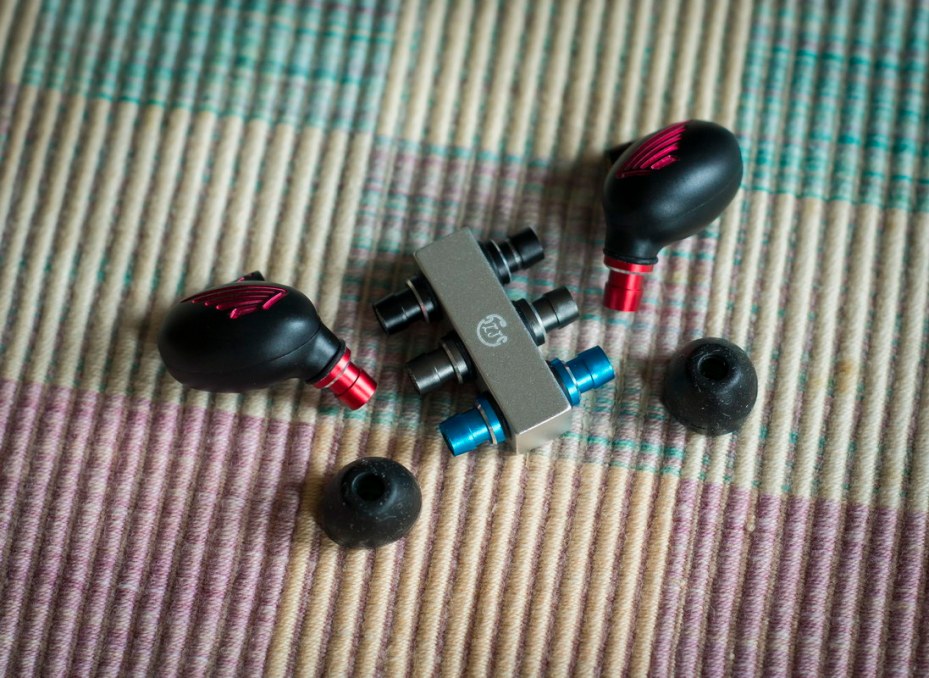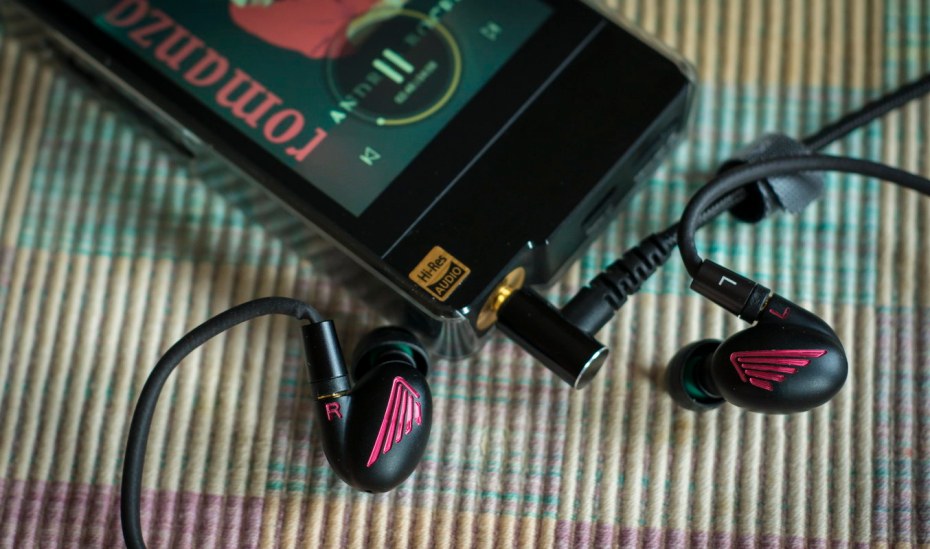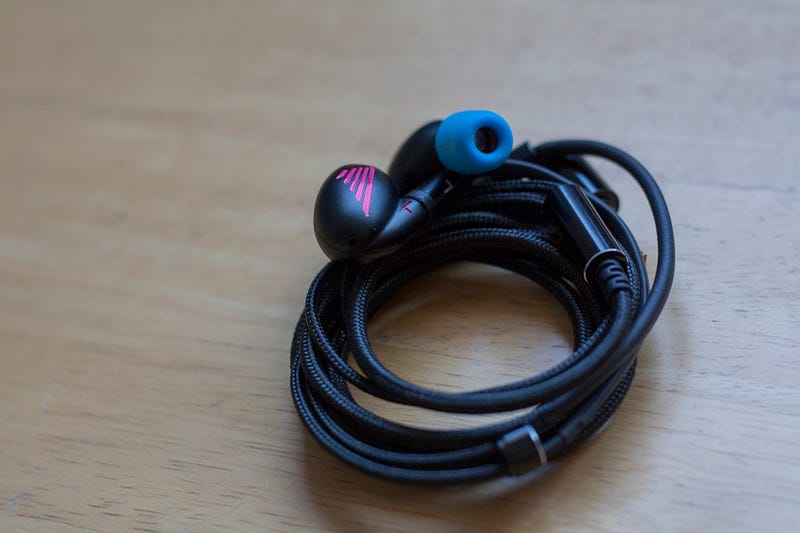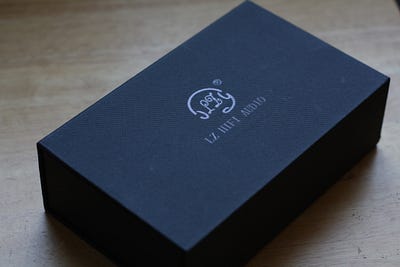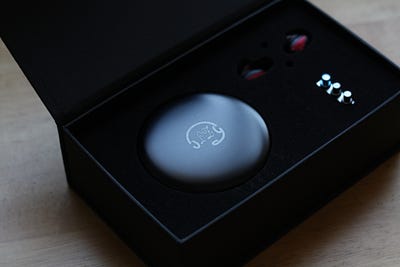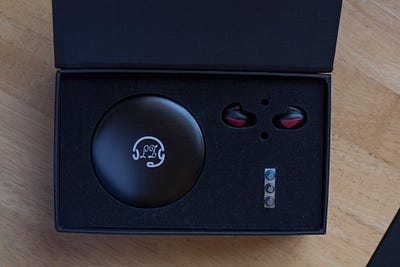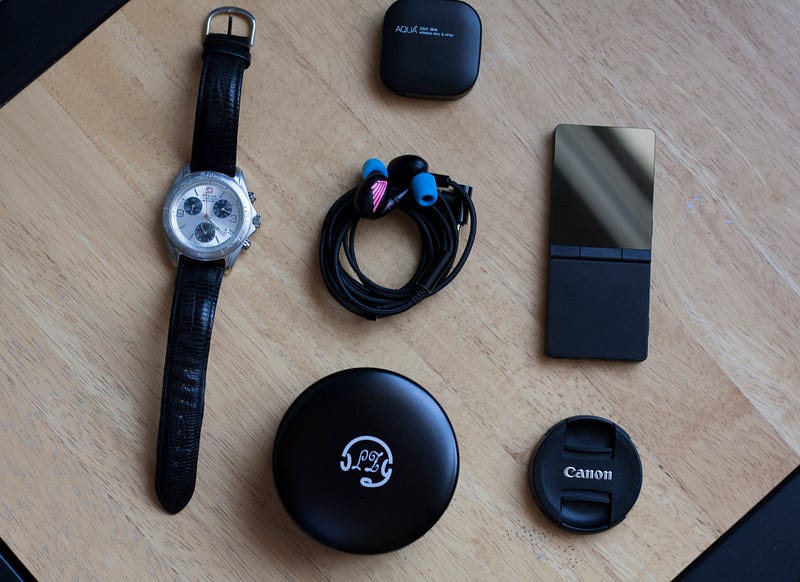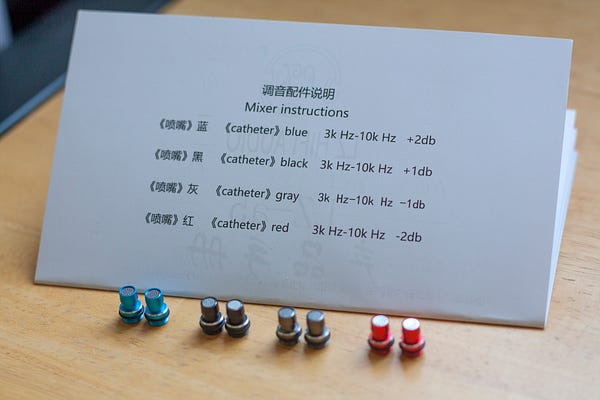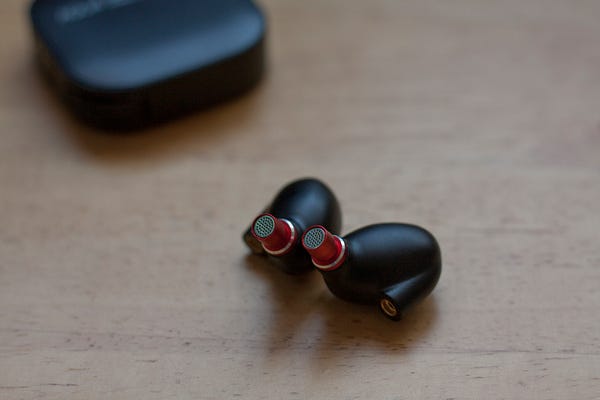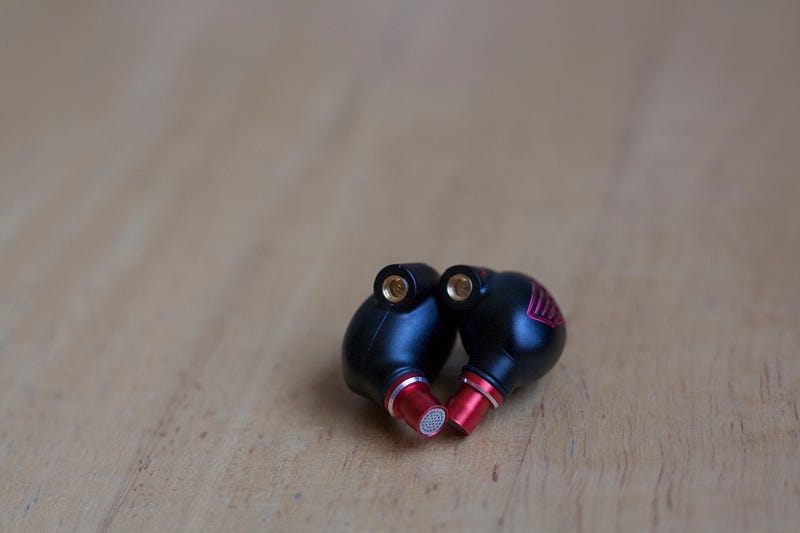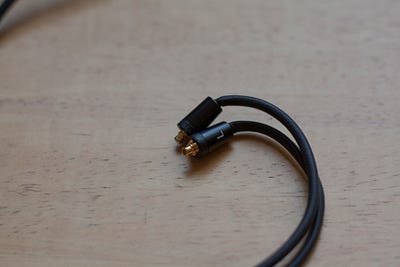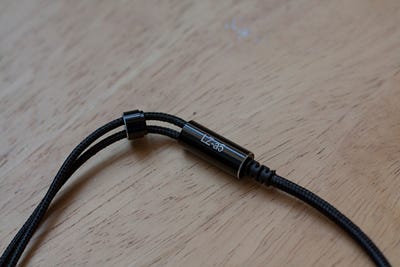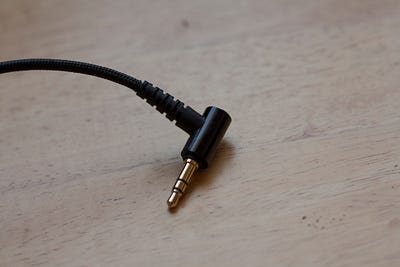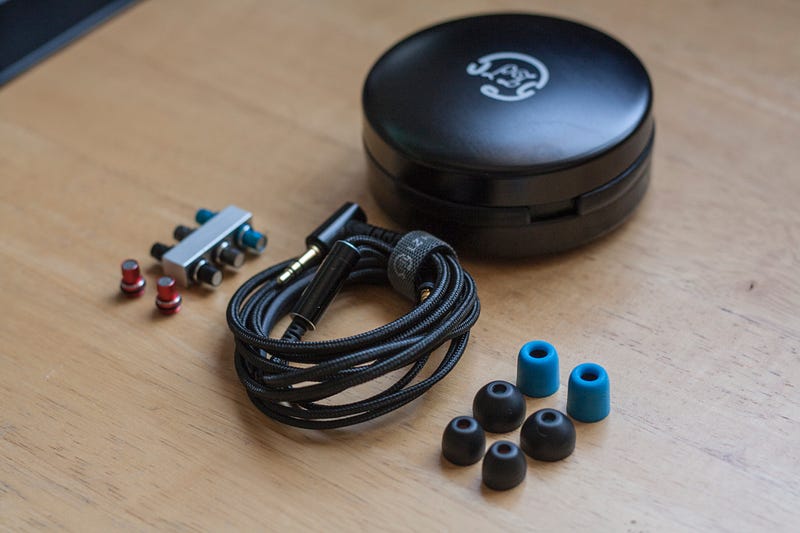
INTRODUCTION
My initial intro to LZ’s range of IEMs was the A4, and it was a truly remarkable triple hybrid IEM with a well though out tuning system. Since then I tried (and purchased for myself after the review) their flagship 7 BA Big Dipper. Recently they have gone back to design another hybrid – this time their new A5. Would it improve some of the A4’s minor issues, and more importantly, could it deliver a higher sonic fidelity and better value despite the higher price? Lets put it through its paces.
ABOUT LZ
LZ (Lao Zhong) was originally a technician repairing home appliances. But he’s always had a love for, and a fascination with, audio – stretching back for more than 20 years. This led to him actually making his own speakers, and then eventually to playing around with IEMs. He bought an expensive pair of big name brand IEMs (and no I won’t mention them), but was not impressed with them. So he borrowed some money, started DIYing his own IEMs and listing them on Taobao. Little did he know how popular the LZ-02 would become, and he wasn’t expecting the interest outside China that it garnered.
In 2015, LZ product discussions appeared on some of the more popular western audio websites for the first time, and their customer base has grown as they got more exposure. They’re located in Shenzhen China, with the factory located in Dongguan. The company is surprising small – with just 7 staff in their main office. They now have a product range of more than a half dozen items – mainly IEMs, but also including a very reasonably priced after-market cable. They’ve also released a tunable flagship model IEM (the Big Dipper) which I reviewed on head-Fi, and eventually purchased for my personal use.
LZ’s message is a simple one – he just wants to make affordable IEMs for the public. And I really love the way he states it. He simply says that “we want to deliver our music to the world”. Not our products. Not our sound. Our music. I kind of like that philosophy.
DISCLAIMER
The LZ-A5 that I’m reviewing today was provided to me freely as a review sample. LZ HiFi have asked me to keep it for my personal use, or for follow up comparisons, and I thank them for this. I’d also like to thank duyu (Frank) for acting as the go between and facilitating the review sample. The retail price at time of review is USD 260.
PREAMBLE
If you haven’t read any of my reviews,
I suggest starting here, as it will give you an insight into my known preferences and bias.
For the purposes of this review – I used the LZ-A5 straight from the headphone-out socket of many of my portables, but predominantly the FiiO X7ii, L&P L3, Cayin N5ii and my iPhone. I did not generally further amp them (I did test them with my Q1ii, XRK-NHB, and E17K), as IMO they do not benefit greatly from additional amplification (YMMV and it may depend on your source).
In the time I have spent with the LZ-A5, I have noticed no change to the overall sonic presentation (break-in), although I note that LZ recommends it. This is a purely subjective review – my gear, my ears, and my experience. Please take it all with a grain of salt – especially if it does not match your own experience.
THE PACKAGE
The LZ-A5 arrived in a 190 x 117 x 58mm “book style” retail box. It is matt black with LZ’s logo on the front. Opening the box reveals a foam insert which holds the IEMs, the filter storage tray, and the carry case (which in turn houses the rest of the accessories).
The total accessory package includes:
- 1 pair of LZ-A5 Hybrid IEMs
- 1 x 3.5 mm single ended to MMCX earphone cable
- 3 pairs of silicone single flange tips
- 1 pair of medium foam tips
- 1 round metallic carry case
- LZ instruction manual and documentation
- 4 sets of tuning filters
THE TECHNICAL SPECIFICATIONS
| Model | LZ-A5 |
| Approx price | $260 USD |
| Type | Penta Hybrid IEM |
| Drivers | 1 x Dynamic and 4 x Knowles Balanced Armature |
| Freq Range | 8Hz – 36kHz |
| Impedance | 16Ω |
| Sensitivity | 105 +/- 1dB |
| Cable Type | 1.2m, replaceable (MMCX) |
| Jack | 3.5mm gold plated single ended, right angled |
| Weight | 29g (incl cables and tips) |
| IEM shell material | Coated and anodised alloy |
MEASUREMENTS
The graphs I use are generated using the Vibro Veritas coupler and ARTA software. Ken Ball (ALO/Campfire) graciously provided me with measurement data which I have used to recalibrate my Veritas so that it mimics an IEC 711 measurement standard (Ken uses two separate BK ear simulators, we measured the same set of IEMs, and I built my calibration curve from shared data). I do not claim that this data is 100% accurate, but it is very consistent, and is as close as I can get to the IEC 711 standard on my budget. I suspect it is slightly down at around 9-10 kHz, but seems reasonably accurate through the rest of the spectrum.

I do not claim that the measurements are in any way more accurate than anyone else’s, but they have been proven to be consistent and I think they should be enough to give a reasonable idea of response – especially if you’ve followed any of my other reviews. When measuring I always use crystal foam tips (so medium bore opening) – and the reason I use them is for very consistent seal and placement depth in the coupler. I use the same amp (E11K) for all my measurements – and output is under 1 ohm.
The graphs are provided merely as a point of discussion, and later in the review I’ve included comparisons to other IEMs for similar reference.
The graph shown is using the black filter. Later in the review I’ll discuss the other tuning options. Channel matching is very good.
BUILD
The LZ-A5 has a traditional oval ergonomic shape and is designed to be used over ear. The pair I have consists of a 2 piece black anodised alloy shell (the seam is hardly visible), with a screw on filter which forms the nozzle and allows you to change the tuning. The LZ-A5 measures ~21mm in width, ~14mm in height (main body only), and ~13mm in depth.
The outer face of each IEM is adorned with a crimson “wing design”, as well as an L or R printed next to the MMCX socket. At the rear of each IEM is a single DD port or vent. The shell design is extremely smooth with no rough edges or hard points. It is also very ergonomic (for me the fit is practically perfect).
The tuning filters are threaded into the nozzle socket, and once in place it extends the nozzle (on a forward angle) ~9mm from the body. The nozzles are 5mm in diameter and have a mesh end and reasonable lip.
The cable is 1.2m, fully cloth sheathed, and has built in form-able wires at the MMCX connectors. These form-able loops are ~85 mm in length, and I personally find them quite practical and easy to use. The cloth sheath is definitely micro-phonic, but this can be alleviated using the cinch and with some careful management (under clothing). The y-split is a metal cylinder which for me sits mid-sternum, and includes a very good cinch. There is good strain relief at the bottom of the Y-split and again at the jack.

The jack is 3.5mm, right angled, and is smart-phone case friendly. It is gold plated. Above the jack is a Velcro cable tie which is quite handy for securing the IEMs when not in use, but which is also a little bulky, and not quite as simple as Dunu’s very similar solution.
Internally the LZ-A5 uses 2 pairs of dual Knowles BA drivers (mids and highs), along with a titanium silver composite diaphragm on the dynamic driver.
FIT / COMFORT / ISOLATION
Isolation is above average considering the LZ-A5 is a vented hybrid, and most public transport noise should be isolated, with the remainder masked by your music. Of course this does depend on how good your tips are, and what sort of seal you get.
Fir and comfort can vary from person to person, and for me personally the LZ-A5 is a huge improvement over the LZ-A4 in this area. The ergonomic design really works, and I find it extremely comfortable – both for everyday use, and also for evenings. They sit flush with my outer ear, and basically disappear within a few seconds of wearing (I could forget they are in). I have slept with them intact, and woken hours later with them still there and no discomfort.

The nozzles have a very good lip, and with the standard sizing, I had no issues fitting Spiral Dots, Spin-fits, Ostry tuning tips and Sony Isolation tips. My tip of choice for the LZ-A5 was either the Symbio Mandarines or Sony Isolation tips. Both provide me with an excellent seal.
FILTERS
This always a tough one – as there are often many options, and without measurements, it is very easy for our brains to throw a filter over everything we hear. Because of this, we can grow quickly accustomed to an IEM’s tonality and lose sight of its performance against the other options.
The front filters double as the nozzles. They are 9mm in length (7mm exposed when fitted), 5mm in diameter with a mesh over the nozzle and good lip. They also have a threaded screw to fit the front of the LZ-A5, and are also fitted with a rubber washer to maintain seal and integrity. They are pretty easy to change out.

The documentation included with the LZ-A5 is not exactly clear or helpful in deciding on filter choices, referring to frequencies in a vague way. Hopefully this illustrates things a little easier. With the filters I received, the black and blue almost match each other with only about 1-2 dB difference at 2-3 kHz, and the rest of the curve matching to less than 1 dB. The same thing occurs with the red and grey filters. In fact, if you wear red and grey together or black and blue together, and wait for your ears to adjust, you’d swear you are using well matched monitors. I would have been worried that I had an outlier set of filters – except for the fact that my friend and fellow reviewer on Head-Fi (Hi-Fi Chris) measured his different set, and came up with almost identical measurements. I’ve seen other reviews claiming differences between all 4 filters, but until someone can get those pairs measured, I’m naturally sceptical. So for now I’ll describe the black and blue together, and red and grey together.
Black / Blue
These filters are quite heavily V shaped, and the main characteristics are very accentuated sub-bass (peaking around 40-50 Hz), a somewhat recessed lower mid-range, very much elevated upper mid-range, a small peak at 7 kHz and another larger peak around the 12-13 kHz area.
Overall this gives a very vivid signature which has quite a bit of low end warmth, but this is countered by the elevated upper mid-range which does tend to have male vocals sounding a little thin, and the overtones or harmonics sometimes having a little too much emphasis. Personally I find it quite easy to listen to the blue or black after my ears have had time to adjust as long as I am listening at reasonably low levels (which I do normally anyway). Guitar does sound quite edgy and bordering on brittle.
The 7 kHz peak doesn’t bother me personally (at least not as much as the upper mid-range), and while there is some heat in hi-hat and crash cymbals (stemming mainly from their fundamentals in the upper mid-range), its not too much to bother me generally (it just sounds a bit “forced”). The 12 kHz peak also adds more “air” and a little more sizzle than is realistic, and for my tastes is another area where things have just gone slightly overboard.
On the whole, if you really like a very vivid presentation, and listen at relatively low levels – you may quite like this combo.
 Grey / Red
Grey / Red
Again this filter combo is quite V shaped, but they are definitely more balanced than the Blue or Black. The sub-bass is at the same intensity level, and the lower mid-range has a similar recession, and the big difference here is the much lower upper mid-range peak, and lower 7 kHz peak also. The upper treble peak at 12 kHz remains intact.
These filters give a much more balanced mid-range and lower treble with far more palatable transitions through the octaves. The only real issue with this tuning is the sub-bass. Its much more noticeable now that the upper mid-range is a little closer to reference, and can tend to dominate. The good news is that it is a relatively easy fix to cut the sub bass a little via EQ to round them out.
My preference
After spending considerable time with the filters, I wouldn’t say any of them really suit my individual preferences, but I do like the grey the best. If I combine the grey with a cut in the sub-bass, and a slight correction in the upper treble – these sound really quite good. I know LZ is considering adding other tuning options – so I do hope there is a way to keep the grey mid-range, and simply cut that bass a bit.
SOUND QUALITY
My testing for this section was done with the FiiO X7ii (AM3A module), no EQ, and Symbio Mandarin tips. I used the X7ii simply because paired they gave me both a very transparent window to the music with low impedance, and also more than enough power. I used the grey filter – because listening without EQ, this is the most palatable filter for me.

For the record – on most tracks, the volume level on the X7ii (paired with AM3a) was ~50-55/120 Single Ended (on low gain) which was giving me an average SPL around 65-75 dB. Tracks used were across a variety of genres – and can be viewed in this list
https://www.head-fi.org/f/articles/brookos-test-tracks.17556/
Relativities
- Sub-bass – very good extension and clearly elevated and dominant in the overall frequency range. Has a lot of rumble even at low listening levels, and with sub-bass dominant tracks (like Lorde’s Royals) can bleed into (or mask) the lower mid-range. Can tend toward looseness.
- Mid-bass – good impact, but takes a back seat to the sub-bass. I actually think the mid-bass is tuned pretty well, but the sub-bass often dominates it.
- Lower mid-range – there is a recession compared to sub and mid-bass, and also the upper mid-range, and does sound slightly distant. Male vocals do not quite have the same presence as female vocals, but they do have enough body to be enjoyable.
- Upper mid-range – elevated compared to lower mid-range, and there is a slow rise from 1 kHz to a first peak at 3 kHz. The result is a clean and clear vocal range, with very good cohesion and some euphony for female vocals to sound sweet and elevated. There is also good sense of bite with guitars – and plenty of presence for fundamental cymbal strikes. Note that with the blue or black filters, this area is overly emphasised and far too etched (unnatural).
- Lower treble has very good extension, and is quite sustained through to 10kHz with just a small peak around 7kHz. But it isn’t over-emphasised with this filter combination, remaining at slightly lower than the upper mid-range amplitude. This presents a lot of clarity and detail, but without too much glare.
- Upper treble – extended through to 12-13 kHz and there is a bit of a peak in this area with all filters. It does not bother me too much (although a small cut here can improve the realism by removing some slight brittleness). This will depend on your sensitivity to upper treble.
Resolution / Detail / Clarity
- For me this is very dependent on the track I am listening to. If its something with lighter overall bass like Nil’s Lofgren’s “Keith Don’t Go” (acoustic guitar), the LZ-A5 is very detailed and clear, and it is easy to pick out micro details (movements on the fret-board etc). If it is even a little more bass dominant (eg Pink Floyd’s “Money”), as soon as the bass guitar kicks in, some of the micro detail which I know is in the track gets lost (masked).
- Cymbals hits (especially hi-hats and crash-cymbals) have nice presence with this filter, and there is good sense of trailing decay. Cutting 12 kHz slightly does enhance the realism a little more – as does cutting the sub-bass.
- Portico Quartet’s “Ruins” is a good track for checking the balance on drumstick clicks, hi-hat taps and general cymbal decay, and it is clear that the BA’s are tuned quite well in this filter configuration. With the blue or black filters though, the same track becomes overly spotlit – and cymbal brushes become blobs, and the upper mid-range becomes shrill and peaky.
Sound-stage, Imaging
- Directional queues are relatively good (as long as its not a bass dominant track).
- Imaging is good in the sense that you get clear direction of sound, and it is consistent – but it can be a little soft sometimes with this filter.
- Presentation of stage is definitely at the periphery of my head – so these are more intimate than expansive.
- Reasonably spherically presented sound-stage – with a no real L/R dominance.
- The applause section of “Dante’s Prayer” was very well represented with a good feel of flow around me.
- “Let it Rain” (Amanda Marshall) had its usual 3D-like sense of spatial presentation (it is the way the track was miked). There was only a slight hint of sibilance with Amanda’s vocals – and I know its present in the recording – so not unexpected. The sibilance was reasonably subdued which was appreciated.
Strengths (grey filter)
- Really nice mid-range which is good for both male and female vocals
- General clarity
- Imaging and intimate staging (without L/R dominance)
- Progression of mid-range (lower, upper) and cohesion with the treble response.
- Good at lower listening levels
Weaknesses
- Sub-bass dominant, and with bassy tracks, there is masking of other frequencies
- Upper treble is very slightly etched, and if you’re sensitive in this area, it may portray to much air.
- Upper mid-range if you’re using black or blue filters – way too much emphasis, and does get fatiguing
AMPLIFICATION REQUIREMENTS
The LZ-A5 is an easy IEM to drive with its 16ohm impedance and 105 dB sensitivity. It was easily driven with all the sources I tried, and this included my iPhone SE and players like FiiO’s X1ii (neither are power houses). My iPhone SE only needed about one 35-40% of its volume for a comfortable 65-75dB for me.
I did try it with the Q1ii, Q5, XRK-NHB, and E17K amps (after volume matching, and quick switching between amped an un-amped). I didn’t notice any appreciable difference in dynamics, and it was the first IEM I’ve tried with the XRK-NHB where I haven’t been awed by the addition of the extra harmonics (the last thing the A5 needs is additional warmth).
RESPONSE TO EQ?
Oh I’m so pleased we are at this section. For this I wanted to correct the blue/black filters first, so using my iPhone SE, I used the Equaliser app, and its parametric equaliser to try to null the upper mid-range’s over-exuberance. I then lifted the dip in the lower mid-range slightly. Finally I brought the sub-bass back and also took a little heat out of 12 kHz. I really like the result, and hope that it helps others as a starting point, and that they can provide feedback on their own tweaks.
The settings are:
- 40Hz, Q=0.5, -3.5 dB
- 800Hz, Q=0.5, +3.0 dB
- 2000Hz, Q=0.1.5, -6.0 dB
- 3000Hz, Q=1.5, -6.0 dB
- 12000Hz, Q=1.0, -2.0 dB
Next step was to use the X7ii and simply tackle the grey filter by reducing 12 kHz and also the sub-bass. For this I simply dropped the last two sliders (31 and 62 Hz by -6dB), and the very highest slider (16 kHz) by around 4 dB (also affects the 12 kHz). Again (for me) instantly better. Still plenty of rumble, but this time not so much domination.
The A5 transforms with carefully applied EQ – I just wish I could do this via the filters …….
COMPARISON WITH OTHER IEMS
A hard one to try and compare because of the filters. So for this one I looked simply to show the overall performance compared to some other tunable IEMs (FLC’s FLC8S, LZ’s own A4 and Dipper). I also quickly compared to a couple of well regarded IEMs in the $250-300 range. These comparisons were all done with the X7ii, (no EQ) – and volume matched using a calibrated SPL meter and fixed 1kHz test tone first.
 Tunable IEMs
Tunable IEMs
LZ A5 grey filter (~USD 260) vs LZ-A4 Black+grey filter (~USD 195)
Both have very good overall build quality – solid materials, well put together. Both have replaceable cables (MMCX) and although they are functional – I’m not really a fan of either cable design. The A4 has more possible filter combinations (more versatile) but is let down by its non-ergonomic design and subsequent comfort issues. The A5 has a far more ergonomic design and very comfortable fit – but suffers a bit from the limited tuning options.
Sonic comparison – and this is comparing the black/grey A4 to the grey A5:

- A5 has noticeably more sub-bass, and because of the imbalance in total tonality with the A5’s bass I personally find it just a touch bloomy.
- Lower mids are very similar, and male vocals are close to identical on both.
- Both have very clear upper mid-range
- I prefer A5’s lower treble – both are extended, but cymbals have slightly better decay with the A5 (in this filter configuration)
- The A5 sounds warmer and a little more intimate. The A4 sounds more vivid and a little more open.
My overall preference would be the A4 sonics in the A5 body if it was possible.
LZ A5 grey filter (~USD 260) vs FLC8S red, none, gold filters (~USD 299)
Again two tunable IEMS – this time the 5 driver hybrid A5 vs the 3 driver hybrid FLC8S. Overall build quality is good on both but the A5 gets the nod for the better quality materials. Both have removable cables, and both stock cables are ones I’d personally replace. Both have an ergonomic fit – I do like the A5’s ergonomics slightly better – but both are comfortable. The A5 has 4 current tuning options. The FLC8S has 3 different tuning points which when combined with the filters (and using no filter options as well) can provide up to 60 different options. This gives far greater control on the overall sound.
Sonic comparison – and this is comparing the red/none/gold combo to the grey A5:

- A5 again has noticeably more sub-bass. The FLC8S bass sound better proportioned, seems quicker (better decay) and not as much bloom.
- Lower mids are somewhat similar in presentation – both have good timbre and tone.
- Both have clean and clear upper mid-range, but FLC8S does sound cleaner and closer – mainly due to the earlier rise after 1 kHz and the lack of any sub-bass masking.
- Both have good treble extension, but again the FLC8S does sound cleaner and more articulate – mainly because of the lack of any masking.
- The A5 sounds warmer overall – both are quite intimate sounding in terms of staging. FLC8S images a little better.
My preference here is divided. The FLC8S will give you better options if you prefer to tweak the filters. If you’re proficient with a parametric EQ – I can actually get as good results with the A5. For most though – the FLC8S is probably going to be the better option considering the ability to tune the sound.
LZ A5 grey filter (~USD 260) vs LZ-Big Dipper +bass, -mid, -treble (~USD 640-820)
Both have very good overall build quality, use quality materials and are well put together. Both have replaceable cables – I much prefer the more flexible Dipper cable though. The Dipper is very ergonomic and is the more comfortable overall for my ears. The A5 has the 4 tunable filters. The Dipper has the option to have 0-3 filter switches – the more expensive 3 switch model gives up to 8 tuning options.
Sonic comparison – and this is comparing the grey A5 to Dipper with bass switch on, but others off:

- A5 again has noticeably more sub-bass, and is warmer than the Dipper. The A5’s bass has more impact. The Dippers bass is much quicker with less decay. Although the Dippers bass graphs somewhat similar amplitude – this is the difference between DD and BA bass. The Dippers bass is clean articulate and balanced. The A5 is heavier, more bass dominant and unfortunately has a masking effect on other frequencies.
- Dipper has more body in its lower mids and male vocals are richer.
- Both have clear upper mid-range but Dippers is a little leaner overall.
- Both have extended lower treble – but the Dipper has a little more glare (I think this is the extension right through from the upper mid-range.
- The A5 sounds warmer but vocals are more distant. This doesn’t express as bigger stage though. If anything Dipper sounds wider.
I thought the A5 performed quite well against the Dipper overall, and if you cut the A5 sub-bass a bit, it really is a well tuned IEM. But I prefer speed and articulation, and the Dipper delivers that for my preferences. This is why I actually ended up paying for the Dipper (buying the review sample from LZ).
Standard IEMs
LZ A5 grey filter (~USD 260) vs FiiO FH1 (~USD 75)
Both have really good build quality with replaceable cables and very comfortable ergonomic build. The A5 build materials are slightly better, and is a 5 driver hybrid vs the FH1 2 driver hybrid. The A5 has the tuning options (although they are a little limited). I like the FH1 cable much more than the A5, and FiiO also provides a balanced cable in the package.
Sonic comparison – and this is comparing the grey filter A5 to the FH1:

- A5 is a little warmer with the increased sub-bass but I actually prefer the tonality of the FH1 bass. The FH1 has more balanced overall tonality, so the response actually has a nice warmth, but does not dominate.
- Both have very good lower and upper mid-range, but there is less masking with the FH1
- Treble is a little more pronounced, a little airier with the A5. The FH1 has similar capability with extension but is more balanced.
- Overall the A5 is more vivid overall, where the FH1 has more balance.
The FH1 is simply best in class at sub $100 and TBH performs in the +$200 range. If both of these were priced the same – I’d take the FH1. This could change if there were better filter options on the A5.
LZ A5 grey filter (~USD 260) vs Brainwavz B400 (~USD 180)
This is a 5 driver hybrid vs a 4 driver BA.
Both have good build quality with replaceable cables and very comfortable ergonomic build. The A5 build materials and finish are slightly better. The A5 has the tuning options (although they are a little limited). Brainwavz also provides a balanced cable in the package.
Sonic comparison – and this is comparing the grey filter A5 to the B400:

- A5 is definitely warmer with the increased sub-bass but again I prefer the tonality of the B400 overall. The B400 is more balanced overall but has less lower treble, so the response has a nice warmth, but does not dominate.
- Both have very good lower and upper mid-range, but there is less masking with the B400
- Treble is a lot more pronounced, and airier with the A5. The B400 has good extension but is tuned to be quite smooth.
- Overall the A5 is more vivid and V shaped with quite distant vocals, where the B400 has more balance and is smoother.
Again – I see more current overall value with the B400, and if you were price matching, this would allow you to get the B400 with upgrade cables.
LZ A5 grey filter (~USD 260) vs Alclair Curve (~USD 250)
This is a 5 driver hybrid vs a 2 driver BA.
Both have good build quality with replaceable cables and very comfortable ergonomic build (the Curve wins on the comfort though – its simply the most comfortable ergonomic universal I’ve ever tried). The A5 has the tuning options (although they are a little limited). The Curve has a much better cable.
Sonic comparison – and this is comparing the grey filter A5 to the Curve:

- There are some big differences here – the A5 is much warmer, with more impact, and slower bass response. The Curve sounds thinner but faster. It still has good bass articulation, but won’t satisfy bass lovers.
- Both have good lower and upper mid-range, but there is no masking with the Curve. Curve sounds a lot cleaner and clearer.
- Despite the graph showing less amplitude in the lower treble, the Curve is far more articulate and detailed. If you prefer a more vivid and v shaped sound the A5 would be the way to go. More balance – definitely the Curve.
This one comes down to preference. I’ve always liked balance and details – so for me the Curve remains my reference IEM.
VALUE
So how do I see the overall value of the LZ-A5? This is a tough one because the A5 does have a lot of potential and simple reissue of a couple of filters could effectively transform it into a must have IEM. On the plus side – it has great build and fit, and the versatility is good with the filter options. On the negative – for me, the current filter options simply don’t have enough variety, and the cable could be better. Is it worth $260? Well I’d say its good value at $260, but not great value (yet). Will LZ provide another couple of filter options – that will be the real “value” question. Lets hope.
LZ-A5 – SUMMARY
I should have posted this review a couple of weeks ago, but work load and the difficulty of writing an in-depth review on a tunable monitor have kept me back. I apologise to both LZ and duyu – but we got there in the end.
The LZ-A5 is somewhat of a paradox as far as hybrid IEMs go. It is very well built, with solid choice of materials and the tuning system is very easy to use (although somewhat limited currently). LZ fixed the comfort issue which was the only major flaw with the LZ-A4, but unfortunately they’ve regressed a bit with the current tuning, and the cable is probably a bit over engineered, and not really practical for long term use. A simple twisted braid would be cheaper and more practical (IMHO of course).
As far as the SQ of the LZ-A5 goes, if you’re a fan of a warmer bottom end, and a vivid V shaped tuning, you may well love the options LZ provides. I think they did well with the mids and highs of the grey and red (please dial down the bass on one of them!), but the blue and black are simply overdone in the upper mid-range (for my tastes anyway). I think this IEM may be polarising. It reminds me a bit of Trinity audio – sometimes you just need to dial back on the vividness.
For the price of $260 you are getting an IEM with a lot of potential, but some of it is unrealised. If you are prepared to EQ, or perhaps DIY some filter tuning through added damping – these could be really good. In their current form though I don’t necessarily see them as an upgrade from the A4 – except in the comfort stakes.
I just want to close with thanking Lao Zhong and duyu (Frank) for arranging the review sample.
| LZ-A5 | My Score | Out of | Weighting | Weighted Score |
| Accessories | 6.0 | 10 | 5% | 0.30 |
| Build | 7.0 | 10 | 10% | 0.70 |
| Design | 6.0 | 10 | 5% | 0.30 |
| Fit/Comfort | 9.0 | 10 | 15% | 1.35 |
| Sound Quality | | | | |
| Bass quality | 6.0 | 10 | 8% | 0.48 |
| Mid-range quality | 8.0 | 10 | 8% | 0.64 |
| Treble quality | 7.0 | 10 | 8% | 0.56 |
| Overall tonality | 5.0 | 10 | 8% | 0.40 |
| Clarity | 6.0 | 10 | 8% | 0.48 |
| Stage/Imaging | 6.0 | 10 | 8% | 0.48 |
| Value | 6.0 | 10 | 17% | 1.02 |
| Total | 72.0 | 110 | 100% | 67.1% |
UPDATED FILTERS
So LZ re-thought things and released another set of filters for the A5. The graphs of the new filters are attached. Rather than go through everything, I’ll summarise the changes, and if this changes the value and final summary for me. The updated filters can be ordered from Penon Audio – I’m not sure what the LZ A5 ships with by default now. So what has changed?
- Starting with the black filter – it is essentially the same as the original black but with about 2-3 dB reduced between 2-3 kHz. Still too coloured for my preference, but many may like it.
- The blue filter virtually has no change – perhaps a 1 dB softening between 2-3 kHz
- The grey filter has the biggest change. This time it bridges the gap between the original grey/red and the blue filters.
- The new red filter is perhaps 1-2dB softer than the original red filter at 2-3 kHz but again, the change is minimal


Are the changes worth it? Well yes because at least there is a little more variety now, but unfortunately (IMO) the tuning changes are still quite one dimensional (mostly the upper mid-range). I wish they had really given some changes in both bass and mid-range. There is a lot that could be done – and I still don’t think they have captured the value. My favourite remains the red filter (new or old), and I do quite like these – although I do still find the bass a little over-done. Does my scoring or conclusions change? No – because really only two filters have changed (admittedly for the better), and I still think the overall signature is quite coloured.
Should you get the new filters? Well for a small outlay, you may find it worth it – especially if you like a coloured upper mid-range emphasis. And there is absolutely nothing wrong with that. A few years ago – I also loved this tuning. Over the last 3-4 years my tastes have changes a bit. Reference they are not – but many will like this tuning.






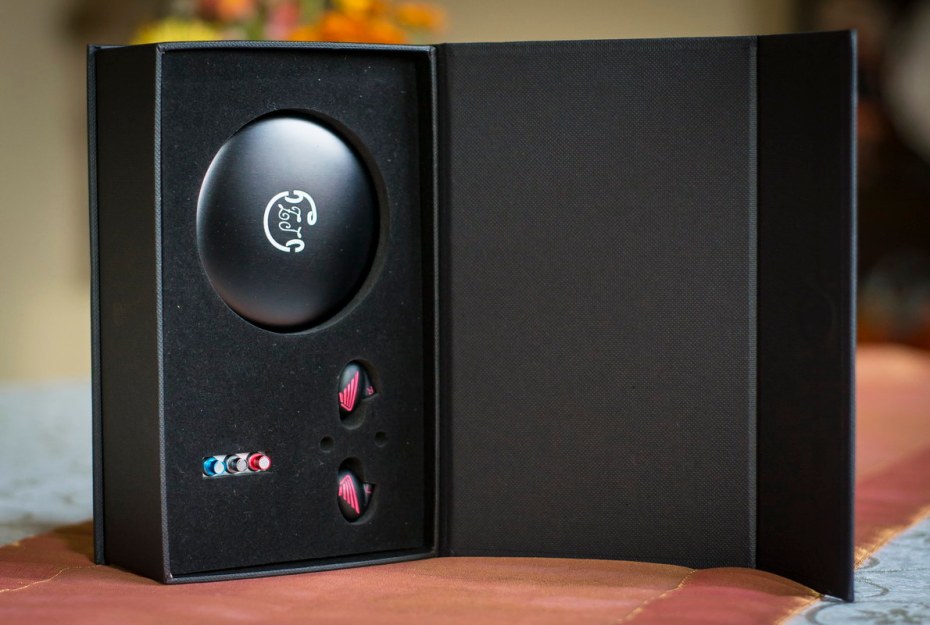

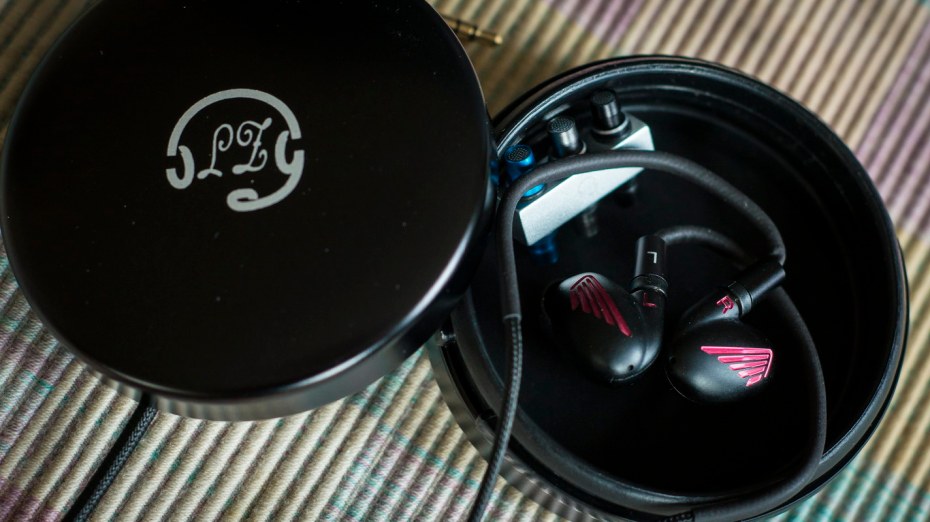
 ) filled with purple paint and one compensation opening at top.
) filled with purple paint and one compensation opening at top.






